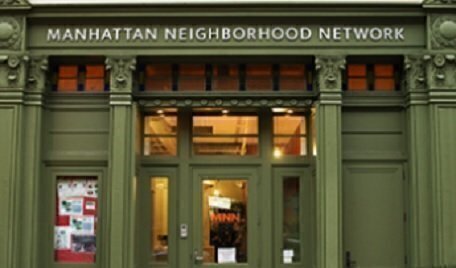The Supreme Court will settle a dispute over a video that aired on a New York City public access television channel that could have ramifications for social media and public radio stations.
 On Friday, the Justices said they would accept Manhattan Community Access Corp. v. Halleck for arguments sometime in 2019. On the surface, the dispute is about the decision made by Manhattan Community Access Corporation (aka the Manhattan Neighborhood Network) to stop showing a video shot by two community producers that criticized MNN. The channel said it received complaints about some language used in the video by one of the producers; the channel also claimed the language violated its harassment policies.
On Friday, the Justices said they would accept Manhattan Community Access Corp. v. Halleck for arguments sometime in 2019. On the surface, the dispute is about the decision made by Manhattan Community Access Corporation (aka the Manhattan Neighborhood Network) to stop showing a video shot by two community producers that criticized MNN. The channel said it received complaints about some language used in the video by one of the producers; the channel also claimed the language violated its harassment policies.
The two producers sued on First Amendment grounds, claiming the public access channel was a public forum for free speech purposes and the channel was a state actor that censored their content, violating their free speech rights.
The case made its way through the legal system until a divided three-judge Second Circuit Appeals panel ruled in favor of the producers. Although MNN was a privately owned non-profit that operated the TV channel, two judges believed its programming represented a public forum protected by the First Amendment.
“We conclude that the public access TV channels in Manhattan are public forums and that [MNN’s] employees were sufficiently alleged to be state actors taking action barred by the First Amendment,” said Senior Judge Jon O. Newman, holding MNN responsible for its action, but not New York City.
Newman acknowledged his panel’s majority didn’t agree with other federal circuit court opinions on the matter. “With all respect to those courts that have expressed a view different from ours, we agree with the view expressed by Justices Kennedy and Ginsburg in Denver Area. Public access channels, authorized by Congress to be ‘the video equivalent of the speaker’s soapbox’ and operating under the municipal authority given to MNN in this case, are public forums, and, in the circumstances of this case, MNN and its employees are subject to First Amendment restrictions,” he concluded.
In his dissent, Judge Dennis Jacobs said the case needed to be decided under another Second Circuit precedent, Loce v. Time Warner Entertainment Advance/Newhouse Partnership, which said “a private corporation operating a television station under a city franchise agreement and in accordance with federal statute is not a state actor.”
“The majority conclusion that MNN is a state actor opens a split with the Sixth Circuit; considerably worse, it opens a split with the Second Circuit,” Jacobs said.
The Supreme Court accepted the case to settle two questions. The first question is if privately owned public access channels are state actors subject to “constitutional liability,” meaning that speakers on the channels have free-speech rights. The second question is if public access television stations are state actors for constitutional purposes when the state doesn’t control the private channel’s board or operations (i.e., its content).
In their argument asking the Court to deny MNN’s appeal, the respondents said the state of New York and the city had the ability to decide if public access channels operating within the state were public forums for free-speech purposes. “New York City’s unmistakable intent [was] to designate its public access channels as public forums. While local governments are under no federal obligation to make this decision, New York City has chosen to do so,” claimed attorney Paul Hughes.
The petitioners also faulted arguments made by MNN that the Second Circuit’s ruling could be extended to put Facebook, Twitter, and public radio stations under same type of First Amendment considerations. “If this case ever does prompt a subsequent court of appeals to reach the sort of fanciful results that petitioners and their amici fear—such as deeming Twitter, NPR, or an Internet service provider a state actor—the Court can grant review then. These fairy-tale monsters are no reason for review here,” Hughes said.
In its final brief to the Supreme Court before the case was accepted, MNN repeated its claim that the lawsuit was about bigger issues.
“We stand at a moment when the very issue at the heart of this case—the interplay between private entities, nontraditional media, and the First Amendment—has been playing out in the courts, in other branches of government, and in the media itself,” it said. MNN also disputed that the state and city created the public access TV channel as a public forum.
“If the minimal nexus MNN has to the government is sufficient to find state action, then entities such as Time Warner, Facebook, Twitter, and National Public Radio, all of which have similar (though minimal) connections to government, should be concerned,” MNN said.
For those arguments alone, the case should get considerable attention as it gets nearer to a public argument date sometime before late April 2019.
Scott Bomboy is the editor in chief of the National Constitution Center.







